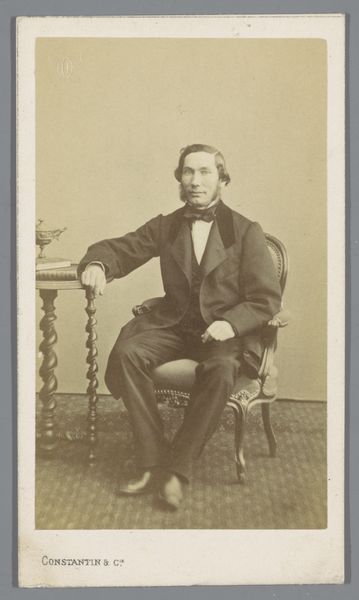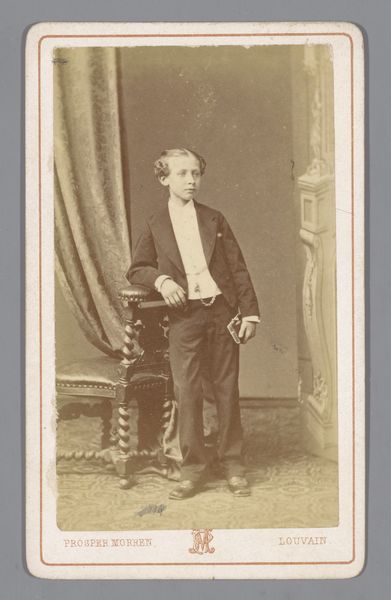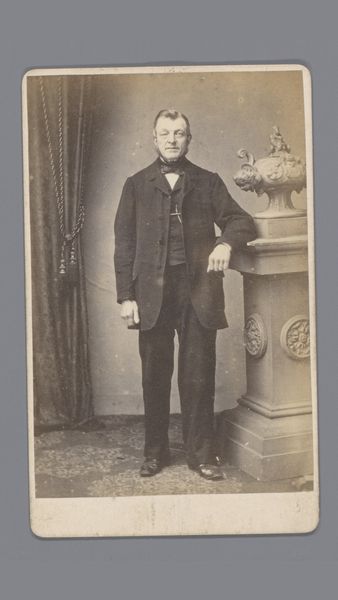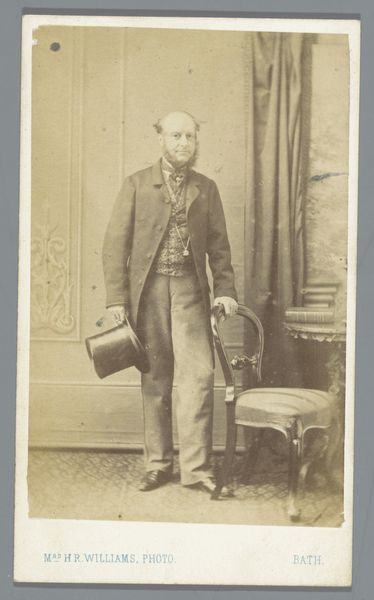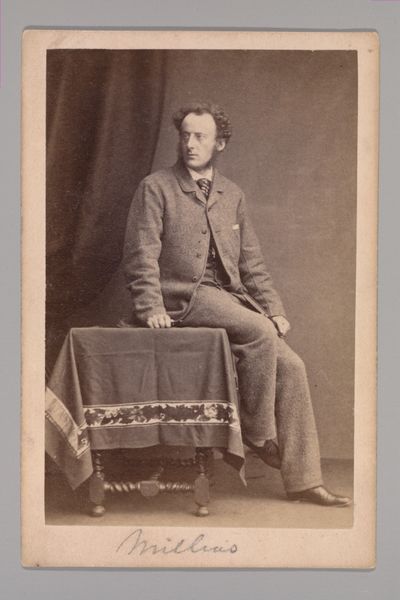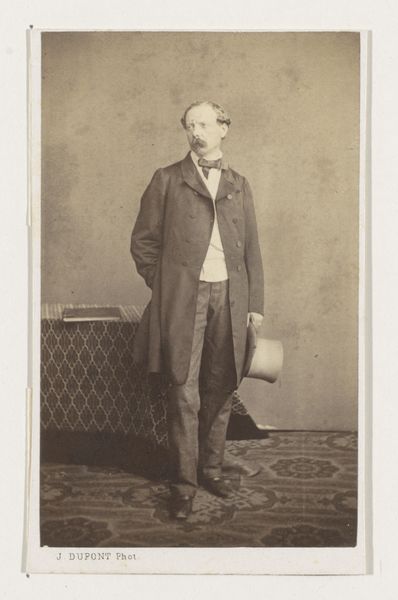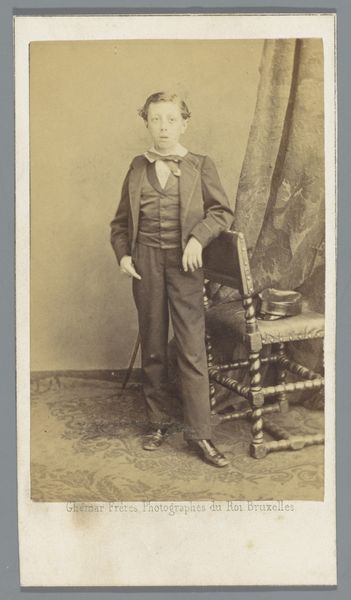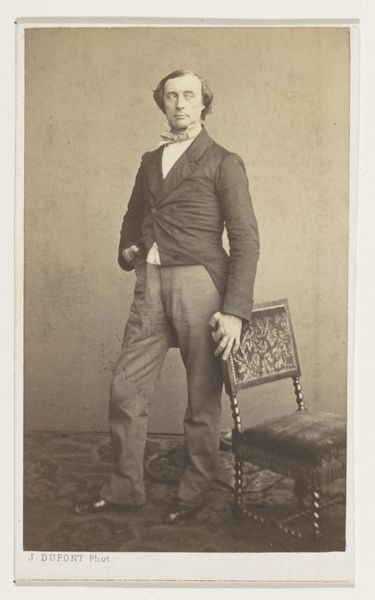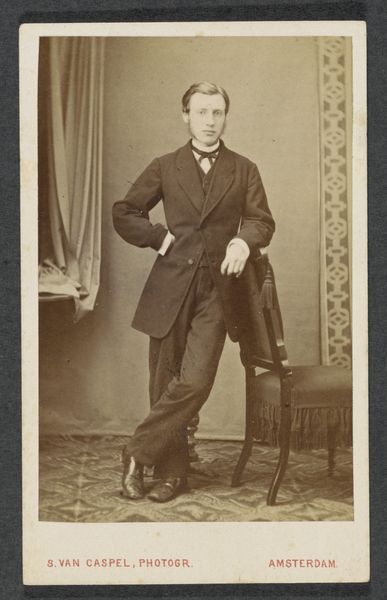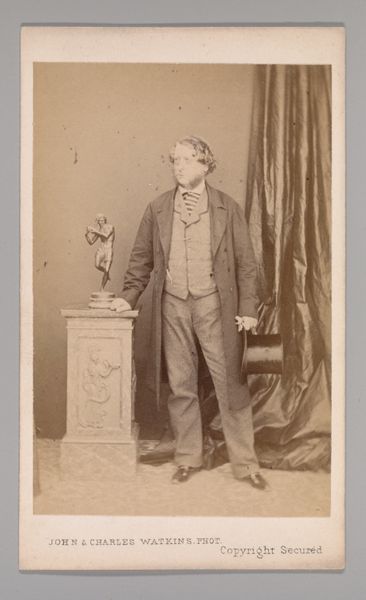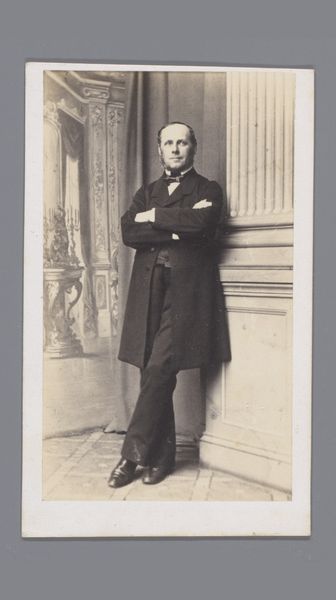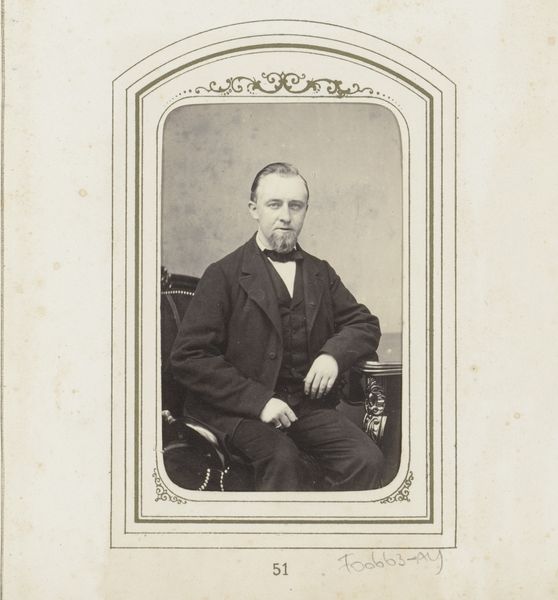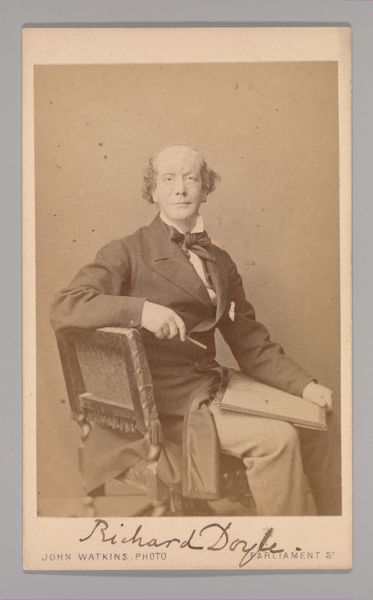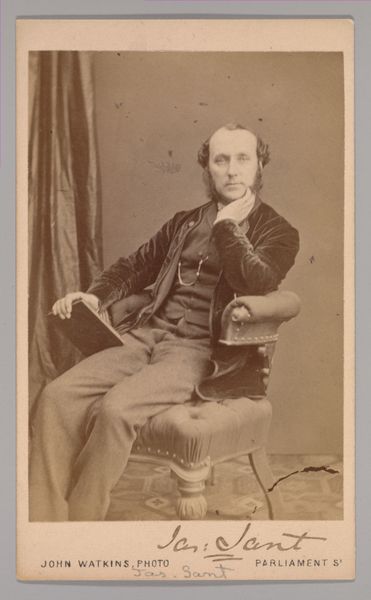![[John Tenniel] by John and Charles Watkins](/_next/image?url=https%3A%2F%2Fd2w8kbdekdi1gv.cloudfront.net%2FeyJidWNrZXQiOiAiYXJ0ZXJhLWltYWdlcy1idWNrZXQiLCAia2V5IjogImFydHdvcmtzL2Q1ODdiODU1LTdjM2UtNDRjMi04N2QxLThhYWZhNjM0Yzc5Mi9kNTg3Yjg1NS03YzNlLTQ0YzItODdkMS04YWFmYTYzNGM3OTJfZnVsbC5qcGciLCAiZWRpdHMiOiB7InJlc2l6ZSI6IHsid2lkdGgiOiAxOTIwLCAiaGVpZ2h0IjogMTkyMCwgImZpdCI6ICJpbnNpZGUifX19&w=3840&q=75)
photography, gelatin-silver-print
#
portrait
#
photography
#
gelatin-silver-print
Dimensions: Approx. 10.2 x 6.3 cm (4 x 2 1/2 in.)
Copyright: Public Domain
Curator: What a compelling image. This gelatin silver print, simply titled “[John Tenniel]”, was produced in the 1860s by John and Charles Watkins. It's part of the Metropolitan Museum of Art's collection. Editor: It’s incredibly formal, even for a portrait from that era. There's a palpable sense of staged elegance about the subject, but what truly strikes me is the textural contrast between the patterned curtain and his smooth, tailored suit. Curator: Indeed, the very choice of gelatin silver print connects it to a broader shift in photographic processes and material culture of the Victorian era, impacting photographic practices across the Western world and democratizing artistic consumption. Editor: You raise a valid point. Examining it through a historical lens, it is intriguing how portraits were evolving within the strict social parameters of that time, simultaneously serving personal desires and political ends. Notice how Tenniel subtly positions himself to imply intellect and authority. The placement near the sculpted bust also evokes notions of art and creativity. Curator: And consider the implications of this image being produced by John and Charles Watkins. They are instrumental figures within photographic studios which industrialized production, creating demand, and shifting artistic value towards popular appeal through a sophisticated studio operation. It makes me think, did sitters truly understand the extent to which they were subjects within the rapidly shifting market forces of art? Editor: I think to some extent, yes. Even without a complete understanding, there was a recognized power in controlling one's image and projecting a desired public persona, and the market around this portraiture allowed the public access in ways previously unseen. Curator: Perhaps in this piece the sitter recognized what labor and commerce his likeness could command. Editor: Viewing it now, after so many shifts in media, material, and message, it offers valuable insight into not just the portrayed but into Victorian values around social image and selfhood. Curator: I’m reminded that we cannot look at individual elements in isolation: neither John Tenniel, nor gelatin prints, nor the Victorian social milieu, are freestanding monoliths, but facets interlinked to create our collective history of materials and modes.
Comments
No comments
Be the first to comment and join the conversation on the ultimate creative platform.
